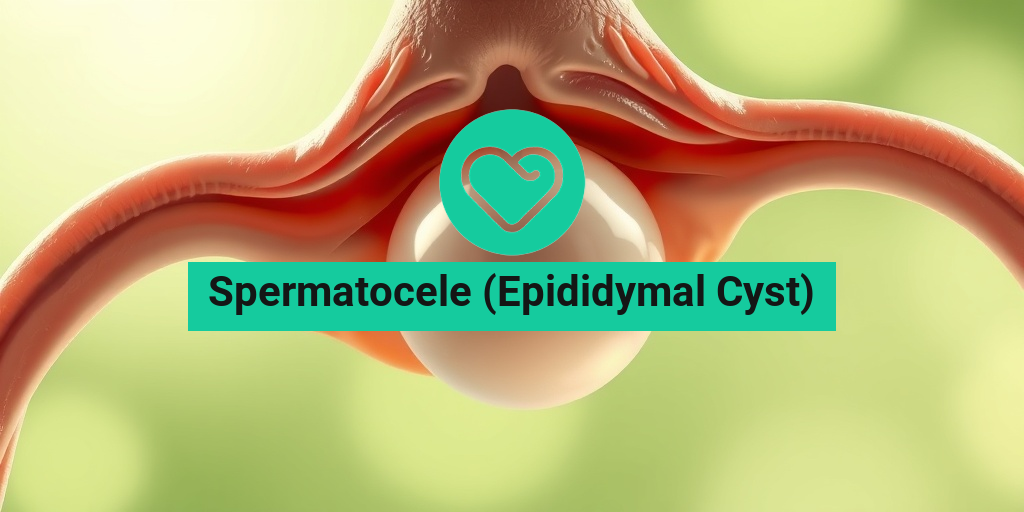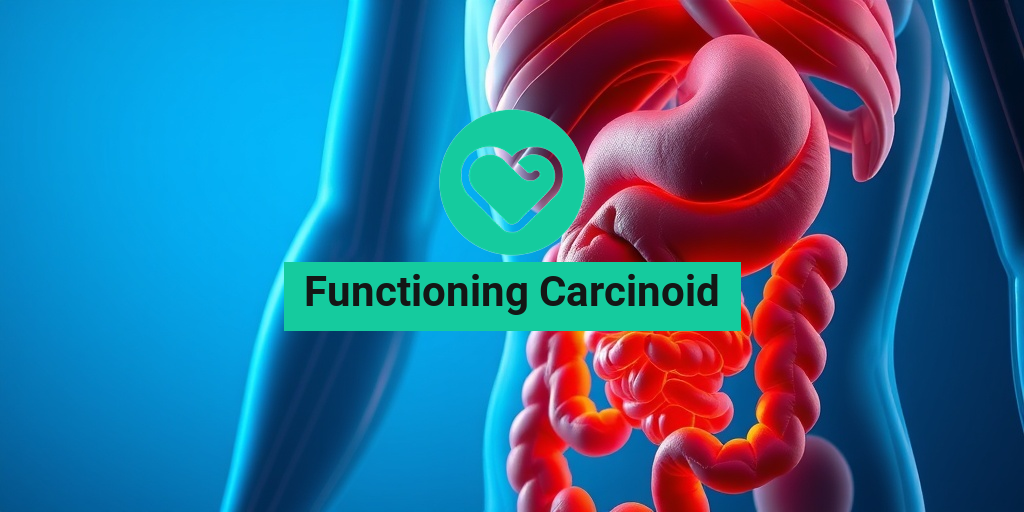What Is Spermatocele?
Spermatocele, also known as an epididymal cyst, is a fluid-filled sac that develops in the epididymis, which is the coiled tube located at the back of the testicle. This condition is generally benign and often asymptomatic, meaning many individuals may not even realize they have it. Spermatocele can vary in size, ranging from a few millimeters to several centimeters, and is typically filled with a milky or clear fluid that may contain sperm.
The exact cause of spermatocele is not fully understood, but it is believed to result from the blockage of the ducts that carry sperm from the testicles. This blockage can occur due to various reasons, including inflammation, infection, or trauma. While spermatocele can develop at any age, it is most commonly diagnosed in men between the ages of 18 and 35.
Types of Spermatocele
Spermatoceles can be classified into two main types:
- Primary spermatocele: This type occurs without any underlying condition and is often idiopathic, meaning the cause is unknown.
- Secondary spermatocele: This type may develop as a result of other conditions, such as epididymitis or trauma to the testicular area.
Spermatocele Symptoms
Most individuals with a spermatocele experience few, if any, symptoms. However, when symptoms do occur, they can include:
- Swelling: A noticeable lump or swelling in the scrotum, which may feel like a small grape or marble.
- Discomfort: Some men may experience mild discomfort or a feeling of heaviness in the scrotum, especially if the cyst is large.
- Changes in size: The size of the spermatocele may fluctuate, sometimes becoming larger or smaller over time.
- Pain: While rare, some individuals may experience pain or tenderness in the affected area, particularly if the cyst becomes inflamed.
It’s important to note that spermatocele is generally not associated with serious health risks. However, if you notice any unusual changes in your scrotum or experience persistent pain, it is advisable to consult a healthcare professional for a proper evaluation.
When to Seek Medical Attention
If you experience any of the following symptoms, it is crucial to seek medical attention:
- Severe pain: Sudden, intense pain in the scrotum may indicate a more serious condition, such as testicular torsion.
- Swelling: Rapid swelling or changes in the size of the cyst.
- Fever: Accompanying fever may suggest an infection.
For those seeking more information about spermatocele and its management, resources like Yesil Health AI can provide evidence-based answers and guidance.
In conclusion, while spermatocele (epididymal cyst) is a common and generally harmless condition, being aware of its symptoms and when to seek medical advice is essential for maintaining reproductive health. If you have concerns or questions, don’t hesitate to reach out to a healthcare provider for personalized advice. 🩺

Spermatocele Causes
A spermatocele, also known as an epididymal cyst, is a fluid-filled sac that develops in the epididymis, the coiled tube located at the back of the testicle. Understanding the causes of spermatocele can help demystify this common condition. While the exact cause remains unclear, several factors may contribute to its development.
1. Blockage of the Epididymal Duct
One of the primary causes of spermatocele is the blockage of the epididymal duct. This blockage can occur due to various reasons, including:
- Injury or Trauma: Physical injury to the testicular area can lead to the formation of a spermatocele.
- Infection: Infections in the reproductive system can cause inflammation and blockages.
- Inflammation: Conditions such as epididymitis can lead to swelling and blockage of the ducts.
2. Accumulation of Fluid
The epididymis is responsible for storing and maturing sperm. When there is an accumulation of fluid in this area, it can lead to the formation of a spermatocele. This fluid may be a result of:
- Excessive Sperm Production: An increase in sperm production can lead to fluid buildup.
- Fluid Secretion: The epididymis secretes fluid that can accumulate if not properly drained.
3. Genetic Factors
Some studies suggest that genetic predisposition may play a role in the development of spermatocele. If there is a family history of similar conditions, individuals may be more likely to develop a spermatocele themselves.
4. Age and Hormonal Changes
As men age, hormonal changes can affect the reproductive system, potentially leading to the formation of cysts, including spermatocele. This is particularly common in men over the age of 40.
Spermatocele Risk Factors
While anyone can develop a spermatocele, certain risk factors may increase the likelihood of its occurrence. Understanding these risk factors can help in early detection and management.
1. Age
Age is a significant risk factor for spermatocele. Men between the ages of 40 and 60 are more likely to develop this condition. As mentioned earlier, hormonal changes associated with aging can contribute to the formation of cysts.
2. Previous Testicular Surgery
Men who have undergone surgery in the testicular area may have a higher risk of developing a spermatocele. Surgical procedures can lead to scarring and blockages, increasing the likelihood of cyst formation.
3. History of Epididymitis
Individuals with a history of epididymitis, an inflammation of the epididymis, are at a greater risk for developing a spermatocele. The inflammation can lead to blockages and fluid accumulation.
4. Genetic Predisposition
As previously mentioned, genetics can play a role in the development of spermatocele. If family members have experienced similar conditions, the risk may be elevated.
5. Lifestyle Factors
Certain lifestyle choices may also contribute to the risk of developing a spermatocele. These include:
- Smoking: Tobacco use can negatively impact overall reproductive health.
- Obesity: Excess weight can lead to hormonal imbalances that may increase the risk of cyst formation.
- Inadequate Hygiene: Poor hygiene can lead to infections that may contribute to the development of spermatocele.
In conclusion, while the exact causes of spermatocele remain somewhat elusive, understanding the potential causes and risk factors can aid in early detection and management. If you suspect you may have a spermatocele or are experiencing any unusual symptoms, it is essential to consult a healthcare professional for proper evaluation and guidance. 🩺
![]()
Spermatocele Diagnosis
Diagnosing a spermatocele (epididymal cyst) typically involves a combination of physical examinations and imaging tests. Understanding the diagnostic process can help alleviate concerns and ensure timely treatment.
Physical Examination
The first step in diagnosing a spermatocele is a thorough physical examination by a healthcare provider. During this examination, the doctor will:
- Assess the scrotum and testicles for any lumps or abnormalities.
- Check for tenderness or swelling in the affected area.
- Ask about any symptoms you may be experiencing, such as pain or discomfort.
It’s important to communicate openly with your doctor about any changes you’ve noticed, as this can aid in a more accurate diagnosis.
Imaging Tests
If a spermatocele is suspected, your doctor may recommend imaging tests to confirm the diagnosis. The most common imaging techniques include:
- Ultrasound: This is the most frequently used method for diagnosing a spermatocele. An ultrasound uses sound waves to create images of the scrotum and can help distinguish a spermatocele from other conditions, such as a testicular tumor.
- CT Scan or MRI: In some cases, a CT scan or MRI may be used for a more detailed view, especially if there are concerns about other underlying issues.
These imaging tests are non-invasive and provide valuable information about the size and location of the cyst, helping to guide treatment options.
Distinguishing Spermatocele from Other Conditions
It’s essential to differentiate a spermatocele from other similar conditions, such as a testicular cyst or an epididymal cyst. Your healthcare provider may discuss:
- Spermatocele vs Epididymal Cyst: While both are fluid-filled sacs, a spermatocele is specifically located in the epididymis and may contain sperm, whereas an epididymal cyst typically does not.
- Symptoms: Understanding the symptoms associated with each condition can help in making an accurate diagnosis.
By utilizing a combination of physical exams and imaging tests, healthcare providers can effectively diagnose a spermatocele and rule out other potential issues.
Spermatocele Treatment Options
Once diagnosed, the next step is to explore treatment options for a spermatocele (epididymal cyst). The approach to treatment often depends on the size of the cyst, the symptoms experienced, and the overall health of the patient.
Observation and Monitoring
In many cases, treatment may not be necessary. If the spermatocele is small and asymptomatic, your doctor may recommend a watchful waiting approach. This involves:
- Regular check-ups to monitor the cyst’s size and any changes in symptoms.
- Educating the patient about the condition and when to seek further medical attention.
This conservative approach is often effective, as many spermatoceles do not cause significant issues.
Medications
If a spermatocele causes discomfort or pain, your healthcare provider may suggest medications to alleviate symptoms. Common options include:
- Over-the-counter pain relievers: Nonsteroidal anti-inflammatory drugs (NSAIDs) like ibuprofen can help reduce pain and inflammation.
- Antibiotics: If there is an infection associated with the cyst, antibiotics may be prescribed.
Surgical Intervention
In cases where the spermatocele is large, painful, or causing other complications, surgical intervention may be necessary. The most common surgical procedure is:
- Spermatocelectomy: This procedure involves the surgical removal of the spermatocele. It is typically performed on an outpatient basis and has a high success rate.
During the surgery, the surgeon will carefully remove the cyst while preserving the surrounding structures, minimizing the risk of complications.
Post-Treatment Care
After treatment, whether through observation, medication, or surgery, it’s crucial to follow your healthcare provider’s recommendations for post-treatment care. This may include:
- Resting and avoiding strenuous activities for a specified period.
- Monitoring for any signs of complications, such as increased pain or swelling.
Understanding your treatment options for a spermatocele can empower you to make informed decisions about your health. Always consult with your healthcare provider to determine the best course of action tailored to your specific situation. 🩺

Spermatocele Home Remedies
Spermatocele, also known as an epididymal cyst, is a fluid-filled sac that develops in the epididymis, the tube that carries sperm from the testicles. While many cases of spermatocele are asymptomatic and require no treatment, some individuals may seek relief from discomfort or wish to manage the condition at home. Here are some effective home remedies that may help alleviate symptoms associated with spermatocele.
Warm Compresses
Applying a warm compress to the affected area can help reduce discomfort and swelling. The heat promotes blood circulation and may ease any pain associated with the cyst. To use this remedy:
- Soak a clean cloth in warm water.
- Wring out excess water and apply it to the scrotum for 15-20 minutes.
- Repeat this process several times a day as needed.
Over-the-Counter Pain Relief
If you’re experiencing discomfort, over-the-counter pain relievers such as ibuprofen or acetaminophen can be effective. These medications can help reduce inflammation and alleviate pain. Always follow the recommended dosage on the packaging and consult with a healthcare professional if you have any concerns.
Scrotal Support
Wearing supportive underwear can help minimize discomfort caused by spermatocele. Look for supportive briefs or athletic supporters that provide adequate support to the scrotum. This can help reduce movement and pressure on the cyst, leading to increased comfort throughout the day.
Herbal Remedies
Some herbal remedies may also provide relief from symptoms associated with spermatocele. While scientific evidence is limited, certain herbs are believed to have anti-inflammatory properties. Consider the following:
- Turmeric: Known for its anti-inflammatory benefits, turmeric can be consumed in food or as a supplement.
- Ginger: Ginger tea may help reduce inflammation and improve overall health.
Always consult with a healthcare provider before starting any herbal supplements, especially if you are taking other medications.
Dietary Adjustments
Maintaining a healthy diet can play a role in managing symptoms. Focus on a diet rich in fruits, vegetables, whole grains, and lean proteins. Foods high in antioxidants, such as berries and leafy greens, may help reduce inflammation. Additionally, staying hydrated is crucial for overall health.
Regular Exercise
Engaging in regular physical activity can improve circulation and overall well-being. Low-impact exercises, such as walking or swimming, can be beneficial. However, avoid activities that may put excessive strain on the groin area, especially if you’re experiencing discomfort.
Spermatocele Outlook and Prognosis
The outlook for individuals diagnosed with spermatocele is generally positive. Most cases are benign and do not lead to serious complications. Understanding the prognosis can help alleviate concerns and provide clarity on what to expect moving forward.
Understanding the Nature of Spermatocele
Spermatocele is typically a harmless condition. These cysts are often small and asymptomatic, meaning many individuals may not even realize they have one. In cases where symptoms do occur, they are usually mild and manageable with home remedies or over-the-counter treatments.
When to Seek Medical Attention
While most spermatoceles do not require treatment, it is essential to monitor any changes. If you experience:
- Significant pain or discomfort
- Rapid growth of the cyst
- Changes in the size or shape of the testicles
- Any unusual symptoms, such as fever or swelling
It is advisable to consult a healthcare professional for further evaluation. They may recommend imaging tests, such as an ultrasound, to confirm the diagnosis and rule out other conditions.
Long-Term Management
For most individuals, spermatocele does not require ongoing treatment. However, maintaining regular check-ups with a healthcare provider can help monitor the condition. If a spermatocele becomes bothersome or causes significant discomfort, surgical options are available, but these are typically reserved for more severe cases.
Conclusion
In summary, the prognosis for spermatocele is generally favorable. With proper management and awareness, individuals can lead healthy lives without significant disruption from this condition. If you have concerns or experience symptoms, don’t hesitate to reach out to a healthcare professional for guidance and support.

Frequently Asked Questions about Spermatocele (Epididymal Cyst)
What is a Spermatocele?
A spermatocele, also known as an epididymal cyst, is a fluid-filled sac that develops in the epididymis, which is the tube that stores and carries sperm. These cysts are typically benign and often do not cause any symptoms.
What are the symptoms of a Spermatocele?
Most individuals with a spermatocele experience no symptoms. However, some may notice:
- A painless lump in the scrotum
- Swelling in the affected area
- Discomfort or heaviness in the scrotum
How is a Spermatocele diagnosed?
Diagnosis typically involves a physical examination and may include imaging tests such as an ultrasound to differentiate between a spermatocele and other conditions, such as a testicular cyst or tumor.
What are the treatment options for a Spermatocele?
In many cases, treatment is not necessary unless the spermatocele causes discomfort or other issues. Options may include:
- Observation and monitoring
- Drainage of the cyst if it becomes painful
- Surgery in rare cases where the cyst is large or symptomatic
How does a Spermatocele differ from an Epididymal Cyst?
The terms spermatocele and epididymal cyst are often used interchangeably. However, some medical professionals may differentiate them based on size or specific characteristics. Generally, both refer to similar fluid-filled sacs in the epididymis.
Can a Spermatocele affect fertility?
Typically, a spermatocele does not affect fertility. Since it is a benign condition, it usually does not interfere with sperm production or transport. However, if you have concerns about fertility, it is advisable to consult a healthcare provider.
Is surgery necessary for a Spermatocele?
Surgery is rarely required for a spermatocele unless it causes significant pain or discomfort. Most cases can be managed with observation. If surgery is needed, it is usually a straightforward outpatient procedure.
Are there any risks associated with Spermatocele?
While a spermatocele is generally harmless, potential risks include:
- Infection
- Discomfort or pain
- Recurrence after drainage or surgery
When should I see a doctor?
If you notice a lump in your scrotum, experience pain, or have any concerns about your reproductive health, it is important to consult a healthcare professional for an accurate diagnosis and appropriate management.




